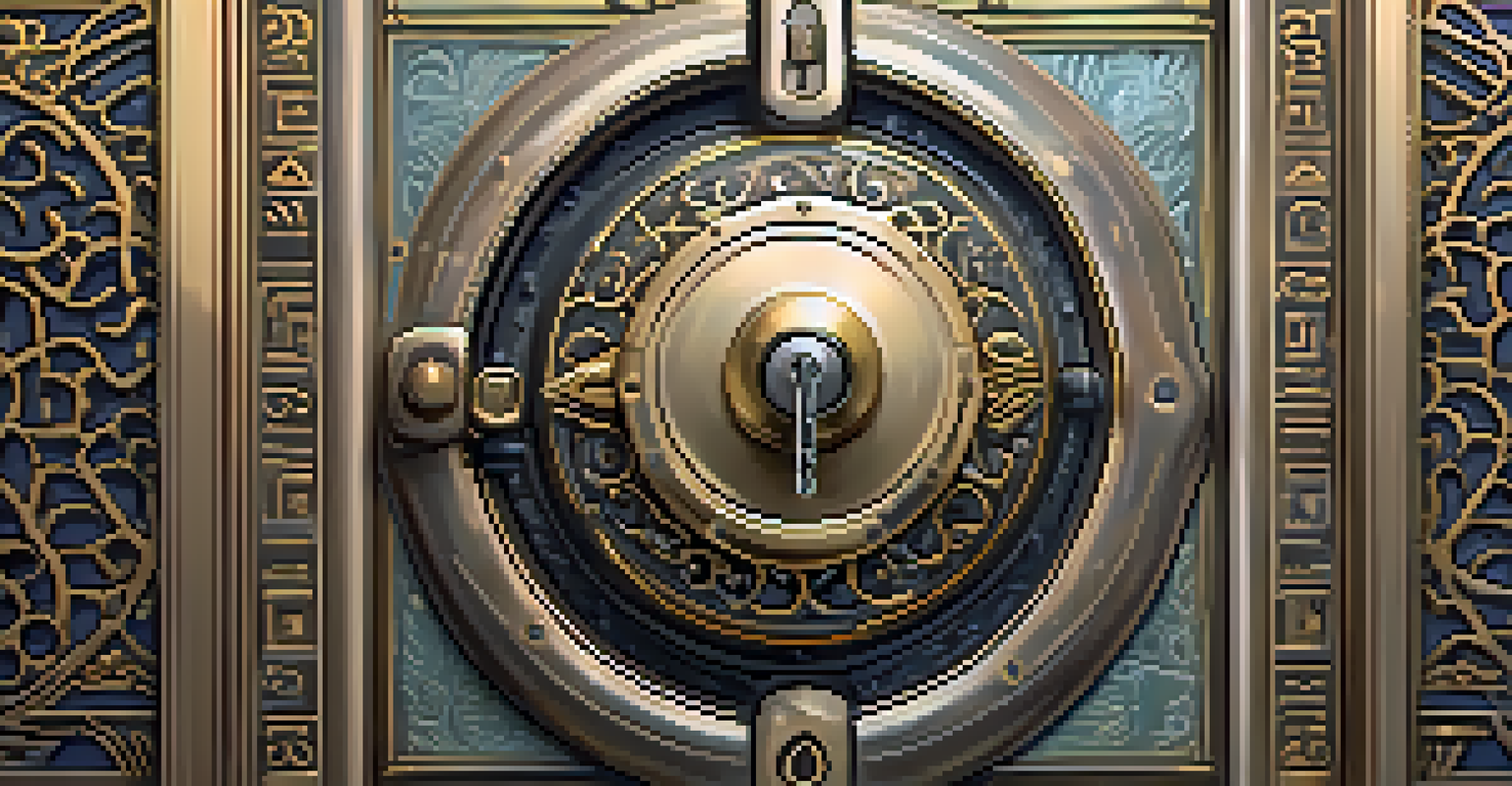The Dangers of Improper Access Control in Smart Contracts

What Are Smart Contracts and Access Control?
Smart contracts are self-executing contracts where the terms are written into code on the blockchain. They automate processes, ensuring trust and reducing the need for intermediaries. Access control is crucial in this context, as it determines who can interact with the contract and what actions they can perform.
Smart contracts allow us to create a new kind of trust, where the code itself acts as the intermediary.
Without proper access control, anyone could potentially manipulate the contract, leading to dire consequences. Think of it like a house without locks; anyone can enter and take whatever they want. The same principle applies to smart contracts, where unauthorized access can compromise the entire system.
Effective access control ensures that only authorized parties can execute specific functions. This not only protects the integrity of the contract but also builds confidence among users that their transactions are secure.
Common Access Control Vulnerabilities in Smart Contracts
Several vulnerabilities can arise from improper access control, such as the infamous 'Reentrancy Attack'. This occurs when a malicious user repeatedly calls a contract function before the initial execution is complete, potentially draining funds. It's a classic example of how weak access control can lead to exploitation.

Another common issue is the 'Ownership Hijacking' vulnerability, where a malicious actor can take control of a contract by exploiting flaws in the ownership transfer process. This is akin to someone stealing your house keys and claiming your home as theirs.
Importance of Access Control
Effective access control is crucial for smart contracts to prevent unauthorized access and ensure security.
Identifying these vulnerabilities early is essential to mitigate risks. Developers need to conduct thorough audits and implement best practices to safeguard against these common pitfalls.
Real-World Examples of Access Control Failures
One of the most notable examples is the DAO hack in 2016, where a vulnerability in the access control mechanism allowed hackers to siphon off $50 million in Ether. This incident not only shook the Ethereum community but also highlighted the critical importance of robust access control.
The greatest risk in blockchain technology is not the technology itself, but the human errors that can compromise security.
Another case is the Parity wallet incident, where a bug in the access control code led to $150 million being frozen indefinitely. Imagine having your bank account locked without any way to access your funds – that’s the impact of poor access control.
These examples serve as cautionary tales for developers in the blockchain space. They underscore the necessity for rigorous testing and security measures before deploying smart contracts.
Best Practices for Effective Access Control
Implementing best practices for access control can significantly reduce risks. This includes using well-established patterns, such as the 'Ownable' pattern, which allows only the designated owner to execute sensitive functions. Think of it as having a trusted guardian for your digital assets.
Regular audits and code reviews are also crucial. Engaging third-party security firms to evaluate your smart contracts can provide an extra layer of assurance. It's similar to hiring a locksmith to assess your home's security.
Vulnerabilities Can Lead to Losses
Improper access control can result in significant vulnerabilities, such as reentrancy attacks and ownership hijacking.
Additionally, employing multi-signature wallets can enhance security by requiring multiple approvals before executing sensitive actions. This collective decision-making process helps prevent unauthorized access and reinforces trust among users.
The Role of Community and Developers in Security
The blockchain community plays a vital role in identifying and addressing access control vulnerabilities. Developers are encouraged to share their findings and collaborate on security improvements. This collective effort creates a safer environment for everyone involved.
Furthermore, community-driven initiatives, like bug bounty programs, incentivize ethical hackers to discover vulnerabilities before malicious actors do. It's a win-win situation, where developers gain valuable insights, and the community benefits from improved security.
By fostering a culture of transparency and collaboration, the blockchain ecosystem can effectively tackle access control issues, making it a safer space for innovation and investment.
Legal and Regulatory Implications of Access Control Failures
Access control failures in smart contracts can have serious legal implications. When funds are lost due to exploitation, users may seek legal recourse, leading to lawsuits and regulatory scrutiny. This is a growing concern as governments start to take a closer look at blockchain technology.
Moreover, organizations that fail to implement proper security measures could face penalties or sanctions from regulatory bodies. Think of it as a company being fined for neglecting safety protocols – the consequences can be both financial and reputational.
Future Trends in Security Measures
Emerging technologies and increased regulatory focus will shape the future of access control in smart contracts.
Thus, understanding the legal landscape surrounding smart contracts and access control is essential for developers and businesses alike. Staying informed and compliant can prevent costly repercussions down the line.
The Future of Smart Contracts and Access Control
As the blockchain space evolves, so too will the approaches to access control in smart contracts. Emerging technologies, like artificial intelligence and machine learning, may offer new ways to enhance security and detect vulnerabilities proactively. It's an exciting time for innovation.
Additionally, the increasing focus on regulatory compliance will likely drive the development of more robust access control frameworks. Developers will need to stay ahead of the curve, ensuring their contracts meet both security standards and legal requirements.

Ultimately, the future of smart contracts hinges on the ability to establish trust through effective access control. By prioritizing security, developers can foster a more resilient blockchain ecosystem that benefits everyone.